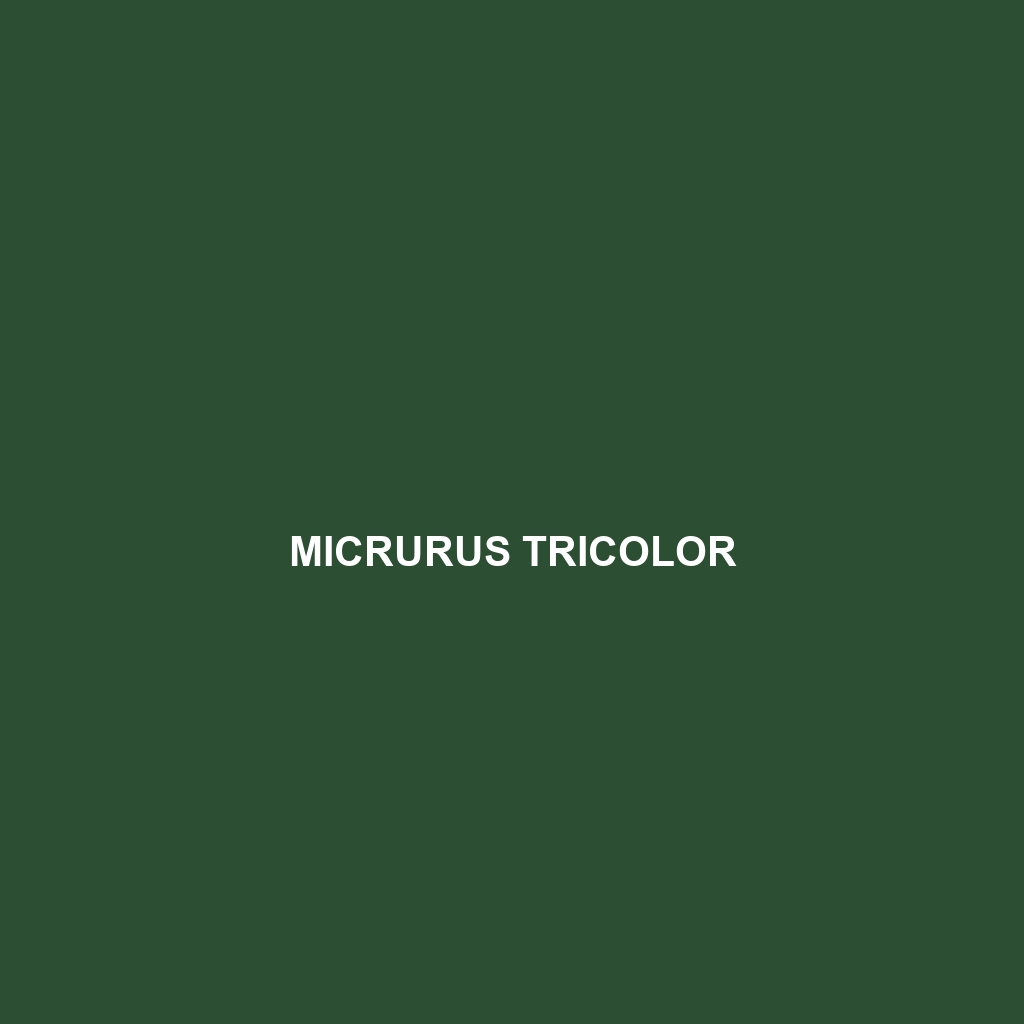Common Name
Micrurus tricolor
Scientific Name
Micrurus tricolor
Habitat
Micrurus tricolor, commonly known as the tricolored coral snake, primarily inhabits a variety of environments across Central and South America. This species thrives in rainforests, where moisture and abundant vegetation provide ideal conditions. It is also found in savannas and temperate forests, showcasing its adaptability to both humid and drier climates. This snake prefers areas with leaf litter and dense ground cover, which offer camouflage and protection from predators. The warm temperatures of its geographic range—from southern Mexico to northern Argentina—make it a perfect home for this strikingly colored reptile.
Physical Characteristics
Micrurus tricolor is recognized for its vibrant coloration, featuring alternating bands of red, black, and yellow. Typically, its vibrant markings serve as a warning to potential predators about its venomous nature. Adult coral snakes can reach lengths of approximately 60 to 80 centimeters (24 to 31 inches), though some individuals may exceed this range. Their bodies are slender and elongated, making them highly agile. The head is distinct and slightly flattened, providing a streamlined shape conducive to burrowing in the leaf litter. The vivid coloration and unique band patterns offer both a striking appearance and effective camouflage among foliage.
Behavior
The behavior of Micrurus tricolor is fascinating, particularly its nocturnal behavior. These snakes are primarily active at night, utilizing their keen sense of smell to hunt for prey. Although generally solitary, they may gather during the breeding season. Interestingly, they are known for their unique mating rituals, which involve intricate displays of movement and physical interactions. When threatened, the tricolored coral snake may exhibit defensive behaviors such as coiling or showing its bright colors to deter potential threats. These behaviors not only assist in avoiding predation but also help in the species’ survival in its natural habitat.
Diet
Micrurus tricolor is classified as a carnivore, primarily preying on small reptiles and amphibians, including lizards and frogs. The snake relies on its potent venom to immobilize its prey, allowing it to consume its meal without significant struggle. Feeding patterns often take place during the cooler hours of the night, aligning with its nocturnal lifestyle. The tricolored coral snake’s hunting technique involves ambushing its prey from a hidden position, utilizing its colorful appearance to blend into its environment until the perfect moment strikes.
Reproduction
The reproductive cycle of Micrurus tricolor typically occurs during the warmer months, peaking in the rainy season when food is more abundant. Mating generally takes place in the spring, with females laying clutches of around 6 to 15 eggs. The average gestation period lasts approximately two months before the eggs hatch. Parental care in these snakes is minimal; once the eggs are laid, the female does not provide protection or sustenance to the hatchlings. The young snakes are fully independent at birth and exhibit similar coloration patterns to adults, which may help them avoid predation during their vulnerable early life stages.
Conservation Status
According to the International Union for Conservation of Nature (IUCN), Micrurus tricolor is classified as Least Concern due to its relatively stable population across its extensive range. However, habitat destruction due to deforestation, urbanization, and agricultural expansion poses potential threats to its habitat. Conservation efforts focusing on habitat preservation and environmental awareness are crucial to ensure the ongoing survival of this captivating species.
Interesting Facts
One of the most intriguing features of Micrurus tricolor is its mimicry of non-venomous snake species, which often feature similar color patterns. This mimicry may provide an additional layer of protection against predators who avoid coral snakes due to their venomous reputation. Additionally, the melanin pigmentation necessary for the tricolored coral snake’s vibrant coloring plays a role in thermoregulation, allowing the snake to effectively maintain its body temperature in varying environmental conditions.
Role in Ecosystem
Micrurus tricolor plays a vital role in its ecosystem as both a predator and prey. By feeding on small reptiles, it helps control their populations and maintains a balanced ecological system. Additionally, as a prey species for larger animals, it serves as an essential part of the food web. The presence of this snake can also indicate the health of its habitat; vibrant and diverse ecosystems often support a varied range of wildlife, including the tricolored coral snake as an essential component of biodiversity.
